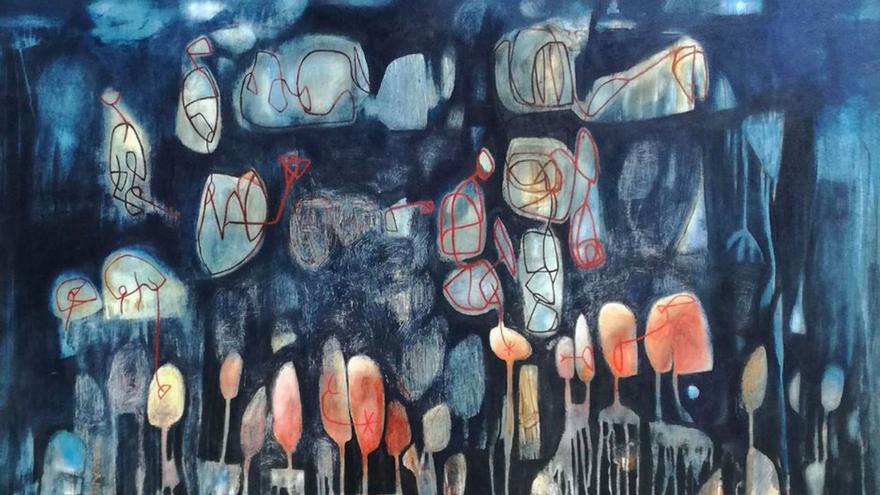Plural Feminine is the title of the exhibition that opens tomorrow at the Boca del Calvari Museum in Benidorm, where five women interpret “the feminine” through art or show the world around them from different perspectives. They, the invited artists, inaugurate the exhibition season in Benidorm programmed by the Department of Historical Heritage, in a year dedicated to giving visibility to women, which will have its continuity in two other successive projects: one photographic and the other urban art.
The curator of the exhibition, Alicia Lamarca, points out that “after so many years of male hegemony in art, we wanted to focus on creative women with this exhibition where we bring together different female voices with discourses that may or may not be feminist.”
In any case, it is they who speak in the first person and “not through the gaze of men or for male contemplation”, as the feminine has traditionally been shown throughout history. Here they explore their body, their sexuality, their concerns and their emotions, but they also talk about universal aspects that have nothing to do with gender.
The Alicante photographers Lucía Morate and Carolina Diego, and Benidorm Ana Ruiz de Apodaca through painting, Helena Davó through video and installation and Ana Pomares through textile art are the creators who show their works.
In the project She loves me, she doesn’t love me, made up of a dozen paintings with twelve bras with different messages, Ana Pomares reflects on the “universality” of gender-based violence, which occurs in countries around the world regardless of their situation economic or political, and lacks specific profiles of both abused and abusers. “You’re worth nothing”, “Shut up” or “If you leave me, I’ll kill you” are some of the phrases spun to these pieces.
Carolina Diego, with Neither I feel nor suffer, approaches the female imaginary through self-portraits in which she explores the stereotypes associated with women from a critical perspective using her own body as a tool, support and object of analysis. The human being as a container of emotions, identity or one’s own space are some of the themes raised in his photographs through ridiculous situations in everyday settings.
Lucía Morate in Panta Rei proposes a parallelism between the images made on the human body and scenes from nature, both in continuous transformation. “I am interested in the body as a fragile, intimate and sensory entity, as a map and territory in which emotions move and mutate,” says the author.
Also on the body arises the work of Ana Ruiz de Apodaca, which she presents through pictorial abstraction in Landscapes of the soul, where there is always something feminine that sustains her landscapes, “a dim, soft light that always wins”, which keeps the “wise women, those who know the secrets of life to repopulate the world.”
Helena Davó talks about time in her video Estimated Time, where she questions the rhythm of life in which to invest the most precious time, and in her video-installation Sweet Dreams, which transfers intimacy to the public space through different characters that circulate projected onto a bed.
www.informacion.es
Eddie is an Australian news reporter with over 9 years in the industry and has published on Forbes and tech crunch.
